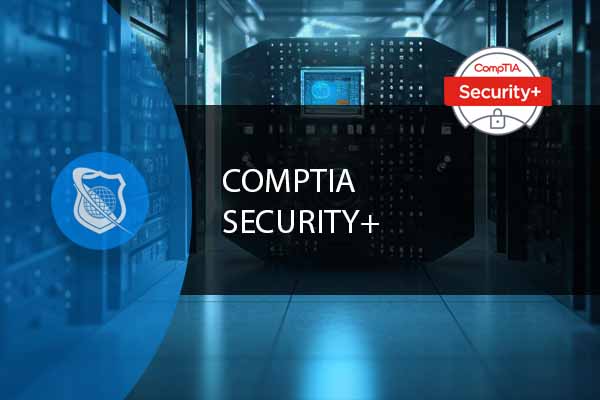In the dynamic world of Information Technology (IT), change is constant and change management is crucial. However, managing these changes effectively is crucial for maintaining security and operational efficiency. This brings us to the concept of change management, sometimes referred to as change control within the IT sector. Although technically distinct, in the realm of IT, these terms are often used interchangeably. Change management is a structured approach to updating networks, devices, and software, ensuring that all modifications are made in a controlled and systematic manner.
The Essence of Change Management
Change management is not merely a procedure but a formal, structured process designed to guide how changes are initiated, evaluated, authorized, and implemented within an IT environment. This process is critical for making informed decisions, reducing unauthorized, failed, or emergency changes, and ultimately implementing changes with minimal impact and risk. The meticulous nature of this process necessitates thorough documentation and version control, ensuring that every alteration is tracked and reversible if necessary.

Information Security Manager Career Path
Propel your career forward and be part of an essential member of any management team as an Information Security Manager. This advanced training series is designed specifically for those want to move up into a management position in the IT field.
Documentation: The Backbone of Effective Change Management
One of the perennial challenges in IT is the maintenance of up-to-date documentation. It’s not uncommon for consultants to encounter networks that have been modified without any corresponding update in documentation, leading to increased effort and costs to understand and rectify issues. Proper change management emphasizes the importance of documentation at every stage, making the process more transparent and manageable. Utilizing change management software can significantly streamline this process, providing a central repository for documenting changes, their reasons, impacts, and outcomes.
The Never-Ending Cycle of Change Management
Change management is a continuous cycle, beginning with the identification of a need, such as a security advisory or a vulnerability, and culminating in the closure of the change request after successful implementation and review. Each stage of this cycle requires meticulous documentation, risk analysis, authorization, execution, and review. The ultimate goal is to minimize security risks, ensure compliance with standards, and reduce complexity and risk in the IT environment.
Impact on Security
The impact of change management on security is profound and multifaceted. By implementing a structured change management process, organizations can significantly enhance their security posture. This process ensures that changes—whether they are software updates, hardware replacements, network modifications, or any other alterations—are carried out in a controlled, transparent, and predictable manner. Here’s a deeper dive into how change management positively impacts security:
Minimizing Security Risks
Change management procedures help in identifying potential security vulnerabilities early in the process. By rigorously analyzing the risks associated with each change, organizations can proactively address security concerns before they are implemented. This preemptive approach significantly reduces the likelihood of introducing new vulnerabilities into the system.
Ensuring Compliance with Standards
A well-defined change management process aligns with industry standards and best practices, such as ISO/IEC 27001, ITIL, and COBIT. Compliance with these standards not only improves security but also ensures that the organization meets regulatory requirements, thereby avoiding potential legal and financial penalties.
Streamlining Process Improvement
Change management facilitates continuous improvement by incorporating feedback and lessons learned into the process. This iterative approach allows organizations to refine their security measures, making them more robust and effective over time. By systematically addressing weaknesses and enhancing strengths, organizations can build a more secure IT environment.
Reducing Complexity and Risk
A structured change management process helps in simplifying the IT environment by ensuring that all changes are well-documented and thoroughly vetted. This reduces the complexity of the system, making it easier to manage and secure. Moreover, by minimizing unauthorized and emergency changes, the overall risk to the system is significantly lowered.
Enhancing Visibility and Control
Change management software provides a centralized platform for tracking and managing changes, offering greater visibility into the IT infrastructure. This visibility ensures that security teams have up-to-date information on the configuration and status of systems, enabling them to detect and respond to security incidents more effectively.
Improving Access Control
By documenting all changes, including who approved and implemented them, change management processes improve accountability and control over who has access to sensitive systems and data. This ensures that only authorized personnel can make changes, reducing the risk of insider threats and unauthorized access.
Supporting Proactive Security Measures
Through regular reviews and audits of the change management process, organizations can identify and rectify potential security gaps. This proactive approach to security helps in preventing incidents rather than merely reacting to them, thereby enhancing the overall security posture.
Facilitating Better Decision Making
The structured approach of change management ensures that all changes are based on informed decisions. By considering the security implications of each change, organizations can prioritize security and make decisions that align with their overall risk management strategy.
The impact of change management on security cannot be overstated. By providing a framework for managing changes in a controlled and systematic way, organizations can significantly enhance their security posture. This leads to a more resilient IT environment, capable of withstanding and responding to the ever-evolving landscape of cyber threats. Through diligent application of change management principles, organizations can ensure the confidentiality, integrity, and availability of their systems and data, thereby protecting their assets and reputation in the digital age.
Secure Your Networks and Prevent Password Breaches
Our robust CompTIA Sec+ course is the perfect resouce to ensure your company’s most valuable assets are safe. Up your security skills with this comprehensive course at an exceptional price.
Technical Considerations and Legacy Systems
The technical considerations and the management of legacy systems within the framework of change management are critical elements that significantly influence an organization’s security posture and operational efficiency. These aspects require careful planning, a deep understanding of the existing IT infrastructure, and a strategic approach to integrating new technologies without disrupting business operations. Here’s a detailed exploration:
Baseline Configuration and Allow/Deny Lists
Establishing a baseline configuration for applications, operating systems, and hardware setups is crucial. It serves as a reference point for all future changes, ensuring that updates or modifications align with the organization’s security and operational standards. Allow lists (previously known as whitelists) and deny lists (blacklists) are essential tools in this context, helping to control which applications or services are permitted to run, thereby reducing the attack surface.
Scheduled Maintenance Windows
Implementing changes during designated maintenance windows minimizes the impact on business operations and reduces the risk of unexpected downtime. These windows are communicated in advance to all stakeholders, ensuring that potential disruptions are planned and managed effectively. It’s a strategic approach to balancing the need for continuous operations with the necessity of updating and maintaining IT systems.
Dependence and Impact Analysis
Before implementing any change, it’s vital to analyze its potential impact on dependent systems. This analysis helps in identifying and mitigating risks associated with changes that could inadvertently affect other parts of the IT environment. Understanding these dependencies ensures that the change management process can proceed without causing unintended consequences or disruptions.
Testing and Rollback Plans
A comprehensive testing strategy, including the use of sandboxes or parallel environments, allows for the safe implementation of changes. Testing in isolated environments helps identify issues before they affect production systems. Additionally, having a well-defined rollback plan ensures that, in the event of an issue, systems can be quickly reverted to their previous state, minimizing downtime and maintaining service continuity.
Management of Legacy Systems
Identifying Legacy Systems
Legacy systems are older technologies or applications that remain critical to business operations but may not support newer security measures or software updates. Identifying these systems is the first step in managing their security and operational risks.
Compensating Controls
For systems that cannot be updated or replaced, compensating controls are necessary. These might include additional security measures, such as enhanced monitoring, segmentation of the network to isolate the legacy system, or the use of virtual patching to address vulnerabilities. The goal is to mitigate the risks posed by these systems without disrupting their functionality.
Multi-factor Authentication and Encryption Limitations
Legacy systems often have limitations in supporting modern security practices like multi-factor authentication (MFA) and advanced encryption. Strategies to overcome these limitations include the use of gateway devices that provide MFA or encryption for traffic to and from the legacy system, thereby enhancing security without requiring changes to the system itself.
Vendor Support and Patch Management
The discontinuation of vendor support for legacy systems poses significant challenges, especially regarding security patches and updates. Organizations must develop strategies for managing these systems, which may include transitioning to alternative solutions, using third-party support services, or accepting the risk while implementing other security measures to minimize exposure.
Documentation and Awareness
Thorough documentation of legacy systems, including their configurations, dependencies, and the rationale for their continued use, is essential. This information helps in understanding the potential risks and ensures that any changes to the IT environment consider the impact on these systems.
The technical considerations and management of legacy systems within change management require a balanced approach that respects the need for innovation and security while acknowledging the realities of existing IT infrastructures. By carefully planning changes, analyzing their impacts, and developing strategies to manage legacy systems, organizations can maintain operational efficiency and security in an ever-evolving technology landscape.

IT User Support Specialist Career Path
View our comprehensive training series covering all the key elements and certifications needed to successfully excel in an IT User Support Specialist job role.
Documentation and Version Control
Effective change management relies heavily on thorough documentation and robust version control mechanisms. These practices ensure that changes are recorded, policies and procedures are easily accessible, and historical versions are maintained for reference or rollback purposes. Version control, in particular, is essential for keeping track of document revisions and software updates, providing a safety net against potential errors or discrepancies.
Real-world Application
Real-world application of change management in IT environments involves navigating various scenarios where changes are required. These scenarios highlight the necessity of a structured approach to implementing updates, managing systems, and ensuring security and operational continuity. Here are some specific examples that delve deeper into the application of change management processes:
1. Applying a High-Priority Security Patch
Scenario:
A critical vulnerability is identified in a software component that is widely used across an organization’s IT infrastructure. The vulnerability is high risk and has been actively exploited in the wild.
Change Management Application:
- Risk Assessment: Conduct a thorough assessment of the vulnerability’s impact on the organization’s systems and data. Identify which systems are affected and the potential consequences of exploitation.
- Change Control Request: Initiate a change control request, detailing the need for the patch, the systems affected, and the proposed timeline for implementation. Include a rollback plan in case the patch leads to unexpected issues.
- Stakeholder Communication: Inform relevant stakeholders about the planned change, including the reason for the patch, the expected downtime (if any), and the anticipated outcomes.
- Testing: Before deploying the patch in the production environment, test it in a controlled setting to ensure it does not disrupt system functionality or introduce new issues.
- Implementation and Monitoring: Apply the patch during a scheduled maintenance window, monitor the systems for any adverse effects, and verify that the vulnerability has been mitigated.
- Documentation and Review: Update system documentation to reflect the change and conduct a post-implementation review to assess the effectiveness of the patch and the change management process.
2. Migrating to a New Software Platform
Scenario:
An organization decides to migrate from an outdated customer relationship management (CRM) system to a new, more feature-rich platform to improve sales processes and customer service.
Change Management Application:
- Requirements Gathering: Collaborate with stakeholders to define the requirements for the new CRM system, including must-have features and data migration needs.
- Change Control Request: Document the rationale for the migration, the expected benefits, the scope of the project, and a detailed plan, including timelines, testing, and training requirements.
- Risk Analysis and Planning: Assess the risks associated with migrating to the new platform, such as data loss, downtime, and user adoption challenges. Develop a comprehensive plan to mitigate these risks.
- Pilot Testing: Implement a pilot migration with a subset of users and data to identify potential issues and refine the migration process.
- Implementation: Proceed with the full migration according to the plan, ensuring minimal disruption to business operations and effective communication with all stakeholders.
- Training and Support: Provide training sessions for users on the new platform and establish a support structure to address any issues or questions.
- Review and Documentation: After the migration, review the process to identify lessons learned and best practices for future projects. Update documentation to reflect the new system and its configurations.
3. Decommissioning Legacy Hardware
Scenario:
An organization needs to decommission outdated hardware that is no longer supported and is prone to failure, replacing it with newer, more reliable equipment.
Change Management Application:
- Inventory and Impact Assessment: Conduct an inventory of the hardware to be decommissioned and assess its impact on business operations and dependent systems.
- Change Control Request: Create a detailed plan for the decommissioning process, including timelines, replacement hardware specifications, data migration strategies, and contingency plans.
- Stakeholder Communication: Communicate the plan to all affected parties, explaining the reasons for the decommissioning, the benefits of the new hardware, and any expected disruptions.
- Testing and Data Migration: Test the new hardware to ensure it meets operational requirements. Migrate data and services from the old hardware, ensuring no loss of information or functionality.
- Implementation and Monitoring: Decommission the legacy hardware and replace it with the new equipment, closely monitoring the transition to address any issues promptly.
- Documentation Update and Review: Update all relevant documentation to reflect the changes in the IT infrastructure. Conduct a post-implementation review to evaluate the success of the project and identify areas for improvement.
These examples illustrate the depth and breadth of change management processes in real-world IT environments, emphasizing the importance of detailed planning, risk management, communication, and documentation in ensuring successful outcomes.
Conclusion
Change management is a critical component of IT security and operations, providing a structured framework for managing changes in a way that minimizes risk and maximizes efficiency. Through diligent documentation, version control, and adherence to established procedures, organizations can navigate the complexities of IT environments with confidence, ensuring that changes lead to improvements rather than unforeseen complications.
Key Term Knowledge Base: Key Terms Related to Change Management in IT and Its Impact on Security
Understanding the key terms related to change management in IT and its impact on security is essential for professionals navigating this field. It aids in ensuring that changes to IT systems do not compromise security or disrupt business operations. Familiarity with these terms enhances communication among team members, helps in the identification of potential risks, and facilitates the development of effective strategies to mitigate those risks. Below is a compilation of key terms that are crucial for anyone working with or interested in change management in IT and its impact on security.
| Term | Definition |
|---|---|
| Change Management | The process of managing changes to IT systems, applications, and infrastructure in a methodical manner to minimize impact on services and enhance security. |
| ITIL (Information Technology Infrastructure Library) | A set of detailed practices for IT service management (ITSM) that focuses on aligning IT services with the needs of business. |
| Change Advisory Board (CAB) | A group of stakeholders and experts that assesses, prioritizes, and approves changes to ensure minimal service disruption and risk. |
| Configuration Management | The process of identifying, documenting, and managing the configurations of IT systems and components. |
| Risk Management | The process of identifying, assessing, and controlling threats to an organization’s capital and earnings. |
| Impact Analysis | The process of analyzing the effects of proposed changes on systems and processes to understand their potential impacts. |
| Release Management | The process of managing, planning, scheduling, and controlling a software build through different stages and environments; including testing and deploying releases. |
| DevOps | A set of practices that combines software development (Dev) and IT operations (Ops) aimed at shortening the system development life cycle and providing continuous delivery with high software quality. |
| Security Assessment | The process of identifying and evaluating the security posture of an IT system or environment. |
| Patch Management | The process of managing updates for software applications and technologies, including security patches, which are crucial for maintaining system security. |
| Compliance Management | The process of ensuring that IT systems and processes adhere to established laws, regulations, guidelines, and standards regarding security and data protection. |
| Incident Management | The process of identifying, managing, recording, and analyzing security threats or incidents in real-time. |
| Vulnerability Management | The process of identifying, classifying, remediating, and mitigating vulnerabilities in software and network systems. |
| Continuous Integration/Continuous Deployment (CI/CD) | A method for frequently delivering apps to customers by introducing automation into the stages of app development. |
| Change Freeze | A period during which changes are restricted to prevent disruption during critical business times. |
| Service Level Agreement (SLA) | A contract between a service provider and a client that details the expected level of service. |
| Disaster Recovery Planning | The process of creating a documented, structured approach with instructions for responding to unplanned incidents. |
| Access Control | The method of ensuring that access to resources is granted to only those with authorization. |
| Encryption | The process of converting information or data into a code, especially to prevent unauthorized access. |
| Audit Trail | A record that shows who has accessed an IT system and what operations they have performed during a given period. |
These terms represent the foundational knowledge required to effectively manage changes in IT systems while maintaining and enhancing security measures.
Frequently Asked Questions Related to Change Management
What is Change Management in IT?
Change management in IT refers to a structured approach for managing all changes made to a system’s hardware, software, and network infrastructure. It aims to ensure that standardized methods and procedures are used for efficient and prompt handling of all changes, minimizing the impact of change-related incidents upon service quality, and improving the day-to-day operations of the organization.
How Does Change Management Impact IT Security?
Change management has a significant impact on IT security by ensuring that all changes are assessed, approved, and documented before implementation. This process helps in identifying potential security vulnerabilities early, minimizing unauthorized changes, reducing the risk of failed changes, and ensuring compliance with security policies and standards. It ultimately leads to a more secure IT environment.
Why is Documentation Important in Change Management?
Documentation is crucial in change management as it provides a detailed record of all changes made to the IT infrastructure, including the rationale for changes, the implementation process, and the outcomes. This ensures transparency, allows for easier troubleshooting and audits, facilitates compliance with regulations, and aids in the continuous improvement of the change management process.
What Role Does a Change Control Board (CCB) Play in Change Management?
The Change Control Board (CCB) plays a pivotal role in the change management process by reviewing all proposed changes, assessing their impact and risks, and making decisions on whether to approve, reject, or request modifications to the changes. The CCB ensures that changes are aligned with the organization’s strategic objectives and that risks are managed effectively.
How Are Legacy Systems Managed Within a Change Management Framework?
Managing legacy systems within a change management framework involves identifying these systems, assessing their impact on the business, and developing strategies for their support, maintenance, and eventual decommissioning. This includes implementing compensating controls to mitigate security risks, planning for data migration, and ensuring that any changes to legacy systems are carefully managed to prevent disruption to business operations.

























